The type of latch or
key on a surgical set can sometimes be used to indicated approximate date of
manufacture.
Civil War Hospital
Department and military cases typically do not have keyed locks (central
escutcheon), but rather bilateral sliding inlayed locks which were necessary in war
time to avoid lost keys. Sets with both sliding latches and a central
keyed lock exist, as do single sliding latches, but they are the exception.
Typically Civil War
contract surgical cases were made of mahogany wood, not pine, walnut, or
fruitwoods.
Earlier (pre-1860)
sets frequently have both swinging latches and a key lock on the front of
the case.
How to lock and unlock
'sticky' locks on set cases
Examples:
|
Swinging type latch,
typical of early American, English, and
European sets pre-1860 |
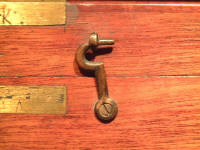 |
|
Key escutcheon and keys, from
different makers, used on civilian sets through out the 1800's |
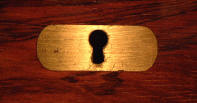

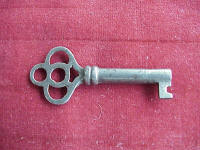
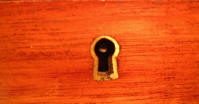 |
|
Military inlayed
sliding brass latches, two types from different makers, typical of
the U.S. Army Medical and
Hospital Departments through out the 1800's. A major
indication of Civil War issue during the Civil War, but also seen
during the Mexican War.
At the bottom
is an 1880's post-Civil War surface mounted chrome plated sliding latch which
is not Civil War era by any stretch of the imagination. |


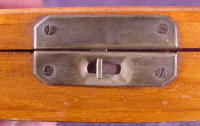 |
|
Here is the only example of a 'sliding military
latch that I have ever seen on a post-Civil War set. The
copper wire bands of the case are typical of 1870's sets by Gemrig
and others. I had never seen any military set after the War
with these latches, but obviously it's possible on Med. Dept. sets. |

 |
|
Swinging latches and central
key escutcheon typical pre-1860 |
 |
|
Civil War style military set with bilateral
sliding all brass latches |
 |
|
Central key escutcheon typical
of civilian surgery sets prior to the Civil War, but also seen in
'assembled' sets sold by the maker after the War using left-over
parts. |
 |
|
Post 1880, non-military,
non-Civil War cherry case with chrome plated sliding latches |
 |
How to lock and unlock
'sticky' locks on set cases
How to identify Civil War military sets by latches